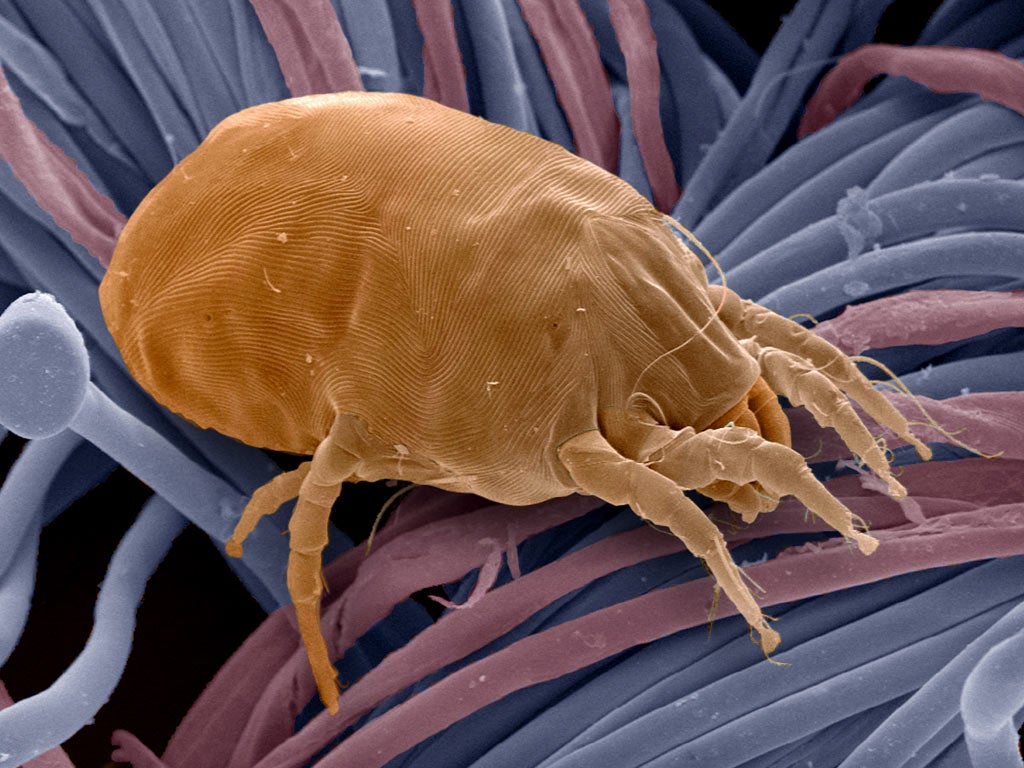Millions suffer 'home fever' as allergy epidemic begins to bite

Your support helps us to tell the story
From reproductive rights to climate change to Big Tech, The Independent is on the ground when the story is developing. Whether it's investigating the financials of Elon Musk's pro-Trump PAC or producing our latest documentary, 'The A Word', which shines a light on the American women fighting for reproductive rights, we know how important it is to parse out the facts from the messaging.
At such a critical moment in US history, we need reporters on the ground. Your donation allows us to keep sending journalists to speak to both sides of the story.
The Independent is trusted by Americans across the entire political spectrum. And unlike many other quality news outlets, we choose not to lock Americans out of our reporting and analysis with paywalls. We believe quality journalism should be available to everyone, paid for by those who can afford it.
Your support makes all the difference.They are the spider-like creatures eager for your warmth and a bed for the night. They remain invisible to the naked eye. And millions of them may already have taken up residence in your home.
Now the house dust mite is behind an unprecedented rise in household allergies, with at least 12 million Britons allergic to their own homes, according to new research.
Cases of perennial allergic rhinitis – known as "home fever" – have risen dramatically, with dust mites accounting for 58 per cent of all household allergies. The figure has risen by more than 10 per cent over the past year.
The charity Allergy UK polled 1,600 people as part of an attempt to gain wider insight into the rise of household allergies. It showed 31 per cent of the nation was allergic to mould, while 45 per cent cited a pet allergy. Some 30 per cent of people are also allergic to chemicals in cleaning products.
But dust mites remain the largest problem. The microscopic creature is thought to have thrived with the rise of modern homes, especially those incubated by central heating with little ventilation. Their presence is strongest in the bedroom, where a single mattress apparently contains more than two million dust mites.
The situation has become so severe that doctors unveiled audacious plans last month to expose babies to dust mites in an attempt to halt the rising epidemic. Experts hope that exposing babies to the common bug will strengthen the defences of the next generation.
Michelle Merrett from Colchester, Essex, has a husband who suffers from rhinitis and a two-year-old son, Christopher, who was diagnosed with a dust-mite allergy when he was just 15 months old. "We knew that something was wrong as we put him to bed where he would just start coughing and sneezing," she said.
After seeking medical advice, the family spent £7,000 modifying their house – stripping the carpet to wooden floors, replacing the curtains with washable blinds and airing the house daily. "We have an extensive deep-clean routine that we perform each day."
Much of the problem is compounded by people mistaking the symptoms of dust mite allergy for those of a common cold – often seeking medical advice rather than taking preventative measures.
A spokesperson for Allergy UK, said: "The home was somewhere we escape to but for millions is has become the trigger of allergies. Now runny nose and sneezing are in fact the most common indicators of a house dust-mite allergy, so the nation is not treating the root of the problem, just the symptoms."
More than 21 million people in the UK now have some sort of allergy.
Unwanted bedmates: dust mite facts
* House dust mites measure between 0.4mm in length and up to 0.02mm in width
* The average life cycle of a dust mite is up to 20 days for a male, and 70 for a female
* Dust mites are one of the most common triggers of asthma
* A female can lay 60 to 100 eggs in the five weeks her life
* Prevention includes washing bedding at 60C, steam-cleaning carpets and curtains and replacing pillows annually, and mattresses every 8 to 10 years
Join our commenting forum
Join thought-provoking conversations, follow other Independent readers and see their replies
Comments